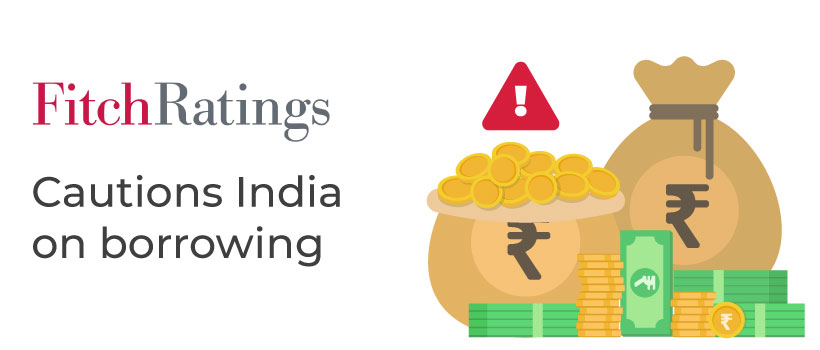List Of Maharatna Companies In India
Fitch Warns India on High Debt and Fiscal Deficit

Last Updated: 8th August 2022 - 07:00 pm
A day after the Union Budget 2022, global rating agency (Fitch Ratings) expressed its disappointment with the higher borrowings level and the lower-than-expected cut in fiscal deficit. In fact, Fitch had gone to the extent of saying that the debt trajectory of India was the key variable in reviewing its negative rating outlook for India. Currently, Fitch, Moody’s and S&P have assigned the lowest investment grading rating to India.
However, while Moody’s has kept the outlook for the Indian sovereign debt at stable, Fitch and S&P have assigned negative outlook for Indian debt paper. That makes the Indian sovereign rating a lot more vulnerable to any downgrades from current levels. Clearly, Fitch and other rating agencies are not too convinced by the fiscal consolidation road map that was laid out by the Union Finance Minister as part of the Budget 2022 document.
Check - Moody’s Upgrades the Outlook of 9 Banks from Negative to Stable
There are two factors that did not go down well with the rating agencies. Firstly, the fiscal deficit target for FY22 ended 10 bps higher at 6.9%. However, the FY23 fiscal deficit target has been pegged at 6.4%. This is much higher than the fiscal deficit target of around 6% that the rating agencies were pencilling in. Secondly, rating agencies were also uncomfortable with the total government borrowings spiking from Rs.12 trillion to Rs.14.95 trillion in FY23.
The government, in Union Budget 2022, had provided a trajectory of reducing the fiscal deficit to 4.5% of GDP by FY2026. The rating agencies believe that such a target was too open ended and also too back-ended. In the light of the sharp increase in direct tax and indirect tax revenues of the government, the rating agencies were expecting a more aggressive cut in fiscal deficit to be front ended in the current fiscal FY23 itself.
Fitch was pencilling in fiscal deficit targets of 6.6% for FY22 and 6.1% for FY23. The Union Budget 2022 has overshot on both these fronts and that is something that has disappointed the rating agencies. Fitch has also pointed that India’s debt to GDP ratio at 90% is the highest in the peer group that it is currently placed in, which makes ratings vulnerable. The pull strategy of hoping for GDP growth to reduce fiscal deficit is not a workable option.
Even Moody’s Investor Service has not been too happy. They flagged the reality of spending not being compensated by higher revenue generation. In addition, Moody’s and Fitch have also expressed concerns about the financial condition of the states and the potential for rising state deficit with the leeway being expanded from 3% of GSDP to 4% of GSDP. In a scenario where recovery could be slower, lower fiscal deficit would have helped a lot.
- Flat ₹20 Brokerage
- Next-gen Trading
- Advance Charting
- Actionable Ideas
Trending on 5paisa
Indian Stock Market Related Articles
Disclaimer: Investment in securities market are subject to market risks, read all the related documents carefully before investing. For detailed disclaimer please Click here.
 5paisa Research Team
5paisa Research Team
 Sachin Gupta
Sachin Gupta




